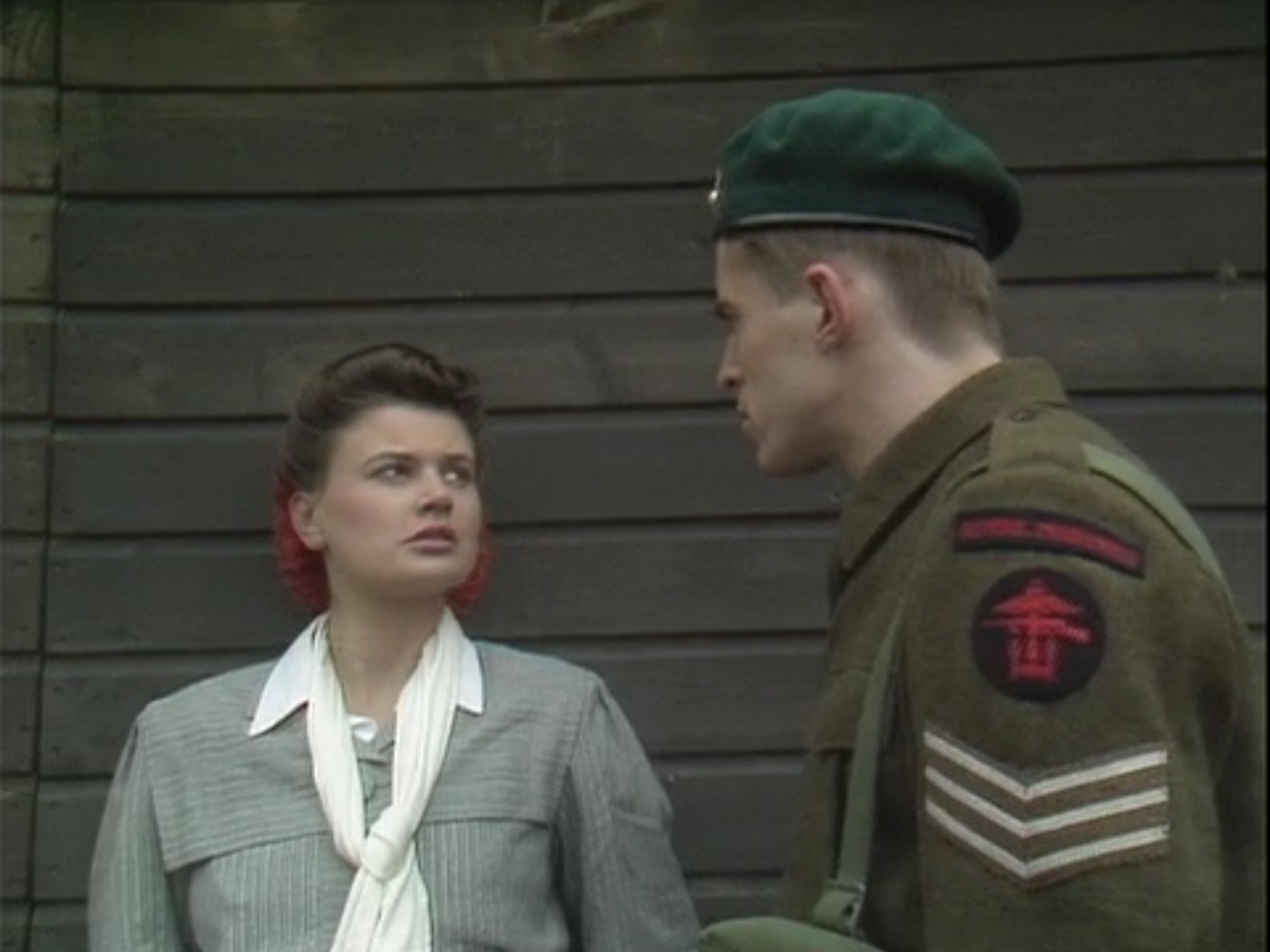The Seventh Doctor’s era may have ended the classic run of Doctor Who, but did its bold choices also pave the way for the future?
There is no denying that the Seventh Doctor‘s era marked the end of Classic Who. After three curtailed seasons with Sylvester McCoy at the helm, the BBC quietly put a stop to the Doctor’s travels in time, with no real indication as to whether the show would ever return.
On the face of it, the Seventh Doctor’s era might not seem like a glowing success. In the late 1980s, Doctor Who‘s viewing figures were at a record low, and its seasons had been whittled down from an average of 26 episodes to a much smaller 14. Furthermore, the programme was recovering from the high profile departure of the Sixth Doctor Colin Baker, plus its script editor Eric Saward. In addition, it had been suspended for 18 months pending a complete overhaul of its format, which was felt by many as a stay of execution.
And yet, despite all these issues, the Seventh Doctor’s era actually marked a bold new beginning for the franchise. Many of the programme’s changes may have been lost in the midst of unflattering headlines (or no headlines at all) but in many ways they paved the way for the series’ future. Indeed, a number of these changes signalled the path that Doctor Who would take when it was relaunched in 2005.
One of these was the early adoption of CGI. Sylvester McCoy’s first story ‘Time and the Rani‘ saw the series’ proper use of computer generated imagery, both for the crashing TARDIS in the story’s opening and for the title sequence that followed.
Clearly, the producer John Nathan-Turner recognised the direction that television production was moving in, and the new possibilities that were opening up now that such sequences were becoming affordable. He was committed to bringing Doctor Who boldly into the 90s, as he attested in the VHS documentary The Making of Doctor Who: Silver Nemesis. This echoed a similar statement he’d made when he’d taken over as producer for Season 18, when he vowed to bring the programme very firmly into the 80s.
And these CGI sequences weren’t just tokenism – they were of a high standard, and took many days to render. Indeed, the quality stands up even in the modern world of today, even if the computer-generated asteroids do look a little ‘flat.’
The uniform look of the Seventh Doctor’s era was also maintained in New Who. In 1986, John Nathan-Turner made the decision to shoot Doctor Who entirely on videotape, bringing to an end the jarring mix of film and video that had made up the majority of 70s Who. Typically, location scenes had been shot on film whilst studio sections were captured on tape to reduce costs. There were a few early exceptions, such as ‘Spearhead from Space’ and ‘The Seeds of Doom,’ but these were rare cases.
And the modern era of Doctor Who maintained this look of uniformity. By 2005, television production had evolved across the board and most programmes had, for many years, been sticking to a single format for their shows. But Nathan-Turner had been one of the first producers to recognise this shift and embrace it. It’s also interesting to note that many of the early New Who episodes were captured on videotape (much like the Seventh Doctor’s era) which were then digitally graded to give them a more filmic look.
And then there was the content of the episodes themselves. Prior to the Seventh Doctor’s era, Doctor Who companions didn’t usually have much of a character arc or ‘reason for being,’ and were often in place to ask the Doctor questions and to scream at monsters. But the Seventh Doctor’s companion was a much bolder choice, and broke the mould. The character of Ace was a streetwise kid from a troubled and mysterious background who had a penchant for blowing things up, and there is a discernible change in her character from her first appearance in ‘Dragonfire’ and her final appearance in ‘Survival.’

(C) BBC Studios
Much of this change can be seen in the Seventh Doctor’s final season, particularly in stories like ‘The Curse of Fenric’ where Ace is forced to confront her troubled relationship with her mother, ultimately being forced to admit that she simply doesn’t love her. And then there is her very final story ‘Survival’ where viewers are given a glimpse into her home life in the tower block suburbs of London.
And these suburbs also formed the backdrop of the relaunched series, as they were the home of the Ninth Doctor’s companion Rose Tyler. The Seventh Doctor’s era had been bold enough to create a companion who didn’t come from an easy background, and the New Who era picked up the proverbial baton. Doctor Who companions were no longer expected to be mere ‘question machines,’ but real and broken human beings with complex lives and desires.
And these desires included sexual ones. Now, the Seventh Doctor’s era wasn’t overt about this, but it was one of the first eras to address it. In one memorable scene in ‘The Curse of Fenric,’ Ace tells the Doctor that she can distract one of the guards using her femininity, bluntly reminding him that she is “not a little girl.”
Admittedly, this statement is a far cry from the more overtly sexual characters like New Who’s Captain Jack Harkness, but it has its origins here. Indeed, Rose Tyler is a companion who is very much in touch with her sexuality; she has a boyfriend, and ultimately falls in love with the eponymous Time Lord.

(C) BBC Studios
Scenes like the one in ‘The Curse of Fenric’ may seem trivial by modern standards, but this was a bold step for the programme to take in the 80s. Formerly, John Nathan-Turner had been so concerned about misconceptions of “hanky panky in the TARDIS” that he ensured his female companions were fully clothed at all times, lest the viewing public got the wrong idea. As such, having a companion who was so in touch with her sexuality was a significant step forward.
So would the modern series have become what it was without the Seventh Doctor’s era? Possibly, but it might have been very different. The Seventh Doctor‘s tenure is like a signpost which points the series in a new direction, and it’s a direction that the modern era followed. The viewing figures may not have been stellar for Sylvester McCoy, and Doctor Who may have been buried in the schedules, but there is no faulting its determination. It continued to make massive strides against impossible odds – strides which fans continue to enjoy to this day in the Blu-ray box sets.
What do you think was the boldest move of the Seventh Doctor’s era? And which aspect of it do you enjoy the most? Let me know in the comments below.

Seventh Doctor’s umbrella – order now from the Lovarzi shop!








Leave a Reply